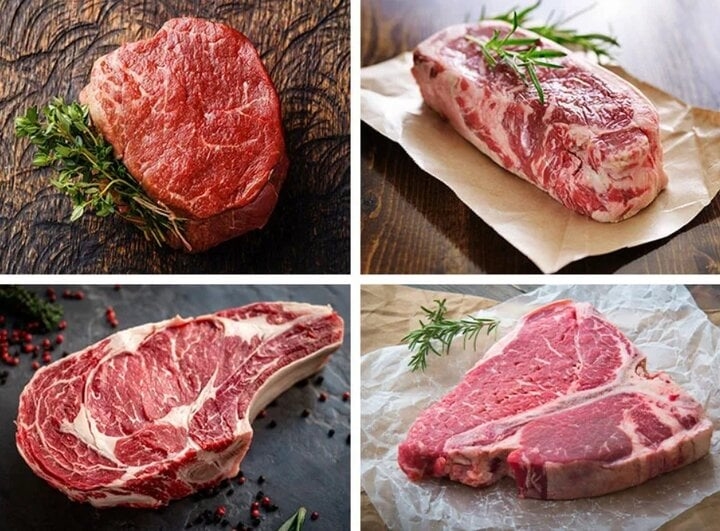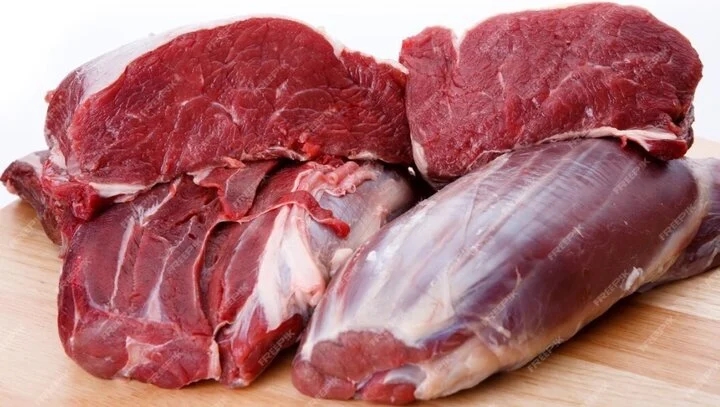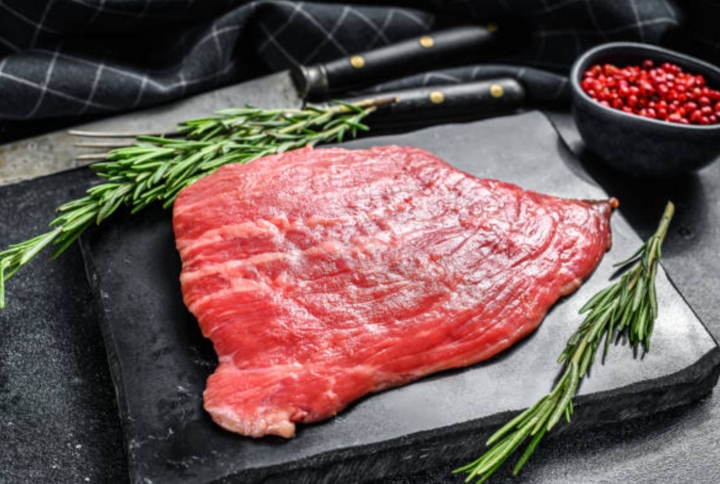Beef is an excellent source of high-quality protein, packed with essential nutrients such as iron, zinc, vitamin B12, and a range of amino acids. Including beef in your daily diet can boost energy levels, strengthen the immune system, and reduce fatigue.
Not only is it delicious and nutritious, but beef is also easily accessible, making it a popular ingredient in various cuisines worldwide. To fully enjoy the flavor and nutritional benefits of beef, it is important to select high-quality cuts of meat.

Beef brisket – one of the most exquisite cuts from the cow (Photo: Pinterest)
Here are some of the most exquisite and highly-regarded cuts of beef, known for their superior taste and health benefits:
Brisket
Brisket is a highly sought-after cut due to its high nutritional value and distinctive flavor. It is located in the chest region of the cow and contains a mix of tendons and fat.
Brisket is divided into two main parts: the leaner navel end and the fattier point end. Brisket tends to be tough, but when slow-cooked and infused with flavors, it becomes incredibly tender and juicy.
A 100-gram serving of brisket provides 21 grams of protein and 155 calories. Protein is essential for muscle building and repair, making it a crucial component of a healthy diet.
Brisket is commonly used in stews, corned beef, stir-fries, and especially in Pho, a traditional Vietnamese dish.
Shank
The shank is considered one of the most exquisite cuts from the cow, with a distinction between the front and hind shanks. The smaller shank in the front is called the shin, while the section in the middle of the hindquarter is known as the shank flap.

One of the most exquisite cuts of beef (Photo: Freepik)
Due to the constant movement of the cow, the shank tends to be tough, dry, and sinewy. However, it has a distinct muscle structure that gives it a unique texture while remaining tender when cooked. Especially when sliced thinly and blanched, this cut is prized for its crispness.
Nutritionally, a 100-gram serving of shank provides 34 grams of protein and 201 calories, making it an excellent source of protein to boost muscle strength and energy levels.
The shank is commonly used in stews, boiled dishes, steamed dishes, blanched dishes, braised dishes, and soups.
Chuck Eye Roll
The chuck eye roll, located in the cow’s shoulder, is a must-have on the list of the most exquisite cuts. It is favored for its tenderness, sweetness, and overall deliciousness. This cut is commonly used in high-end dishes due to its distinctive flavor and ease of preparation.

Chuck Eye Roll. (Photo: Getty)
The chuck eye roll has a soft texture and is relatively lean. It is often seasoned with basic ingredients such as salt, pepper, and sugar, and then oven-roasted to retain its natural flavor. This cut is incredibly versatile and can be prepared in various ways, including steak, Pho, and stir-fries. When cooked to medium-rare, the chuck eye roll remains tender and juicy, retaining its natural sweetness.
How to Identify Fresh and High-Quality Beef
Selecting fresh and high-quality beef is crucial to ensure a safe and nutritious meal. Here are some tips on how to identify fresh and delicious beef based on criteria such as smell, color, meat mass, and meat grain.
Smell
Fresh beef will have a distinctive pleasant aroma, slightly pungent. To test the smell of the meat, touch the meat with your hand and then bring your finger close to your nose to sniff. Good-quality beef will have a mild, pleasant aroma without any unpleasant or strange odors.
Color
Fresh beef will have a characteristic bright red color; the fat on top should be light yellow. When you press your fingertip into the meat, it should feel naturally sticky, dry, and smooth, without any sliminess or wetness.
Fresh beef should not have a strong odor but rather a fresh and pleasant aroma. Beef that has been soaked in chemicals to mimic the appearance of beef will feel firmer, have a stronger odor, and have uneven coloring.
Checking the Meat Mass
High-quality beef will have a firm and elastic texture. When pressed, the meat should not sink or feel slippery. The cut surface should be dry, without any exudate.
Poor-quality beef will have a darker color and an unpleasant odor. The fat will appear yellowish, and the hip bone will be yellow (characteristic of cows with curled-ear ulcerative disease). When pressed, the meat will feel slippery, soft, and less elastic.
Examining the Meat Grain
Beef with smaller and longer meat grains tends to be softer. Avoid buying beef with larger meat grains as it will be tougher and chewier. Pork disguised as beef usually has shorter and larger meat grains, with less defined spaces between the grains.
According to VTC news

































